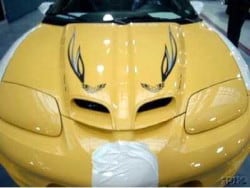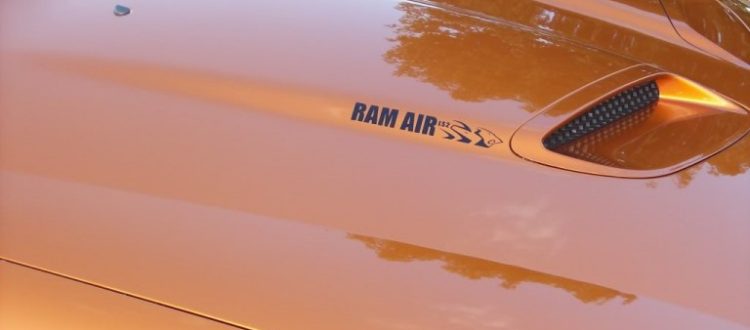The correct installation of hood decal graphics on vehicles.
Question: Does anyone know the proper way to put a hood decal on?
Very carefully! Actually, the question should be “Did you purchase the right decal material, and if not, why not?” It is very important when dealing with large decals covering an area with multiple curvatures such as almost every part of an automobile that you use a decal material that is meant to be installed over this type of substrate.
1. Consider the type of decal you have.
If you purchased a decal made of a vinyl decal material that was intended to be installed on a flat surface such as a window or a flat sign face, then you need to fire whomever you purchased it from, unless of course you didn’t tell him what you were installing the vinyl sticker on. Then you should fire him for not asking you what you were wanting the decal for.
 There are PSV’s (pressure sensitive vinyls) that are meant to be curved around a convex or concave surface and to go around corners without wrinkling. These “vehicle graphic” materials are formulated in such a way as to bend but not break, so to speak, and are much easier to use than the incorrect material would be.
There are PSV’s (pressure sensitive vinyls) that are meant to be curved around a convex or concave surface and to go around corners without wrinkling. These “vehicle graphic” materials are formulated in such a way as to bend but not break, so to speak, and are much easier to use than the incorrect material would be.
However, assuming you did purchase the right material, the proper way to install the decal is, as I said at the beginning is – very carefully.
A good vehicle graphic that is intended to last a long time should also have the proper over-laminate. One that will flex at the same rate as the vinyl underneath it. If the printer you purchased the graphic from doesn’t know what he’s doing, he may have used the wrong laminate, and you’re going to have a difficult time going around corners, or it may be impossible without delamination or wrinkles.
2. Use a heat gun or hair dryer to apply heat.
When we install vehicle graphics, we always use a heat gun, although a hair dryer will do the trick, although if you drop it it has a greater likelihood of ceasing to operate than an industrial heat gun will. But if you want to save a hundred bucks, just use a hair dryer and be careful. Of course, if your hair dryer cost a hundred bucks and it would quit working if you drop it, you might want to pony up a hundred bucks for the industrial heat gun that would have much less likelihood of quitting if you drop it.
Disclaimer: I am not liable for your broken or non-working heat gun or hair dryer, no matter what I’ve stated here.
3. Clean and polish the hood.
Obviously, the hood of your car should be clean and polished. Preferably waxed as well. This will make it so the vinyl hood decal sticks the way it is supposed to and has virtually no chance of peeling up around the edges.
4. Use the heat gun or hair dryer as you stick the hood decal.
You will want to use the aforementioned heat gun/hair dryer if there are any dips or ridges on the hood of your car in order to make sure you are able to get the material to lay flat and bubble free. Move slowly. Don’t rush.
If you have the right material, if it does fall into itself, glue on glue, you have a few seconds to remedy the situation before the material glues to itself and you’ve lost a bunch of money. If you bought the wrong material (or were sold the wrong material) or you decided to go with the cheapest guy in town who sold you an inferior vinyl decal material, and the above scenario takes place, your cheap vinyl just got very expensive.
So make sure you ask questions when you purchase vehicle vinyl graphics to make sure you’re getting what you need. At least then you could ask for your money back if it doesn’t pass muster.
Popular Posts:




